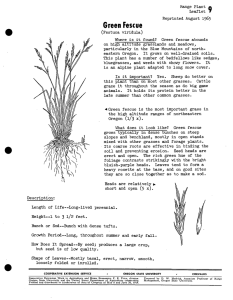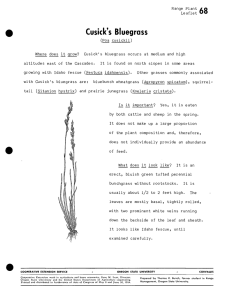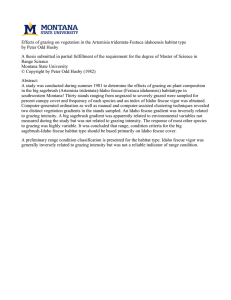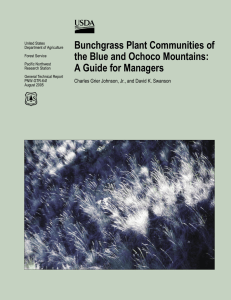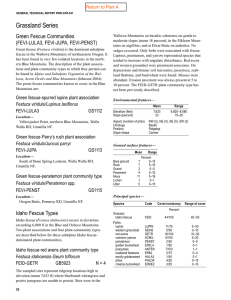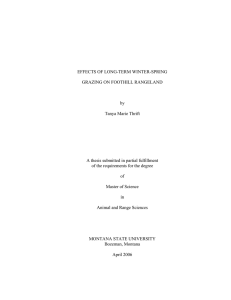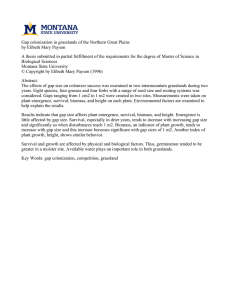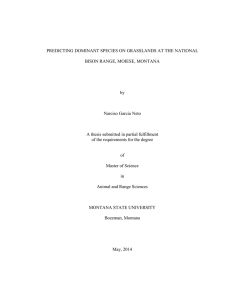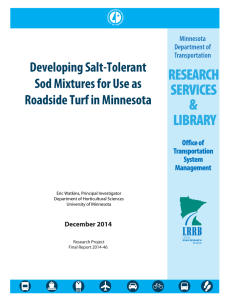19 Idaho Fescue
advertisement
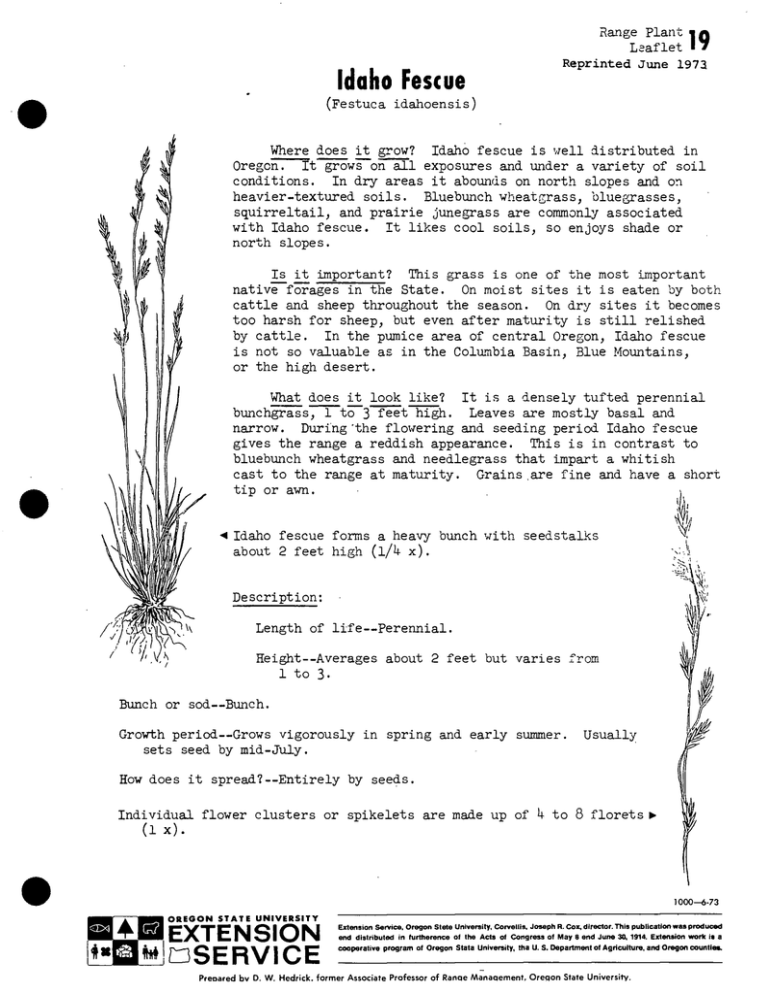
Range Plant Lsaflet Reprinted June 1973 19 Idaho Fescue (Festuca idahoensis) Where does it grow? Idaho fescue is well distributed in Oregon. It grows on all exposures and under a variety of soil conditions. In dry areas it abounds on north slopes and on heavier-textured soils. Bluebunch wheatgrass, bluegrasses, squirreltail, and prairie junegrass are commonly associated with Idaho fescue. It likes cool soils, so enjoys shade or north slopes. Is it important? This grass is one of the most important native forages in the State. On moist sites it is eaten by both cattle and sheep throughout the season. On dry sites it becomes too harsh for sheep, but even after maturity is still relished by cattle. In the pumice area of central Oregon, Idaho fescue is not so valuable as in the Columbia Basin, Blue Mountains, or the high desert. What does it look like? It is a densely tufted perennial bunchgrass, 1 to-3 feet high. Leaves are mostly basal and narrow. During'the flowering and seeding period Idaho fescue gives the range a reddish appearance. This is in contrast to bluebunch wheatgrass and needlegrass that impart a whitish cast to the range at maturity. Grains .are fine and have a short tip or awn. >. ■4 Idaho fescue forms a heavy bunch with seedstalks about 2 feet high (l/k x). Description: Length of life—Perennial. fi'/' Height--Averages about 2 feet but varies from 1 to 3- Bunch or sod—Bunch. Growth period—Grows vigorously in spring and early summer. sets seed by mid-July. Usually How does it spread?—Entirely by seeds. Individual flower clusters or spikelets are made up of k to 8 florets ► (lx). 1000—6-73 A ^^m OREGON STATE UNIVERSITY ^W EXTENSION l-^MJaSERVICE Extension Service, Oregon Slate University, Corvaltis, Joseph R. Cox, director. This publication was produced and distributed in furtherance of the Acts of Congress of May 8 and June 30, 1914. Extension work is a cooperative program of Oregon State University, the U. S. Department of Agriculture, and Oregon counties. Prenared bv D. W. Hedrick. former Associate Professor of Ranqe Manaqement, Oregon State University. Description; (continued) Shape of leaves—Narrow and rolled, giving a fine appearance to the bunch. Location of leaves—Concentrated at the base to make a dense tuft. Shape and size of grain—Narrow grain about l/h inch long without the awn. Other names--Blue bunchgrass, fescue, sourgrass. How to use it—Pasture later in spring so as not to injure more palatable grasses such as bluebunch wheatgrass. •^ Here is where Idaho fescue grows best—shady locations or north slopes—and often associated, as in this picture, with bitterbrush and pine trees. (Picture taken south of Bend, Deschutes County.) Does it look like anything else? Idaho fescue might be mistaken for other fescues earTy in the season. The reddish cast at flowering time is a good identifying characteristic of this grass.. Roots are dark colored. Plant of Idaho fescue. ► Note the long, fine leaves and the stems lacking in leaves.
